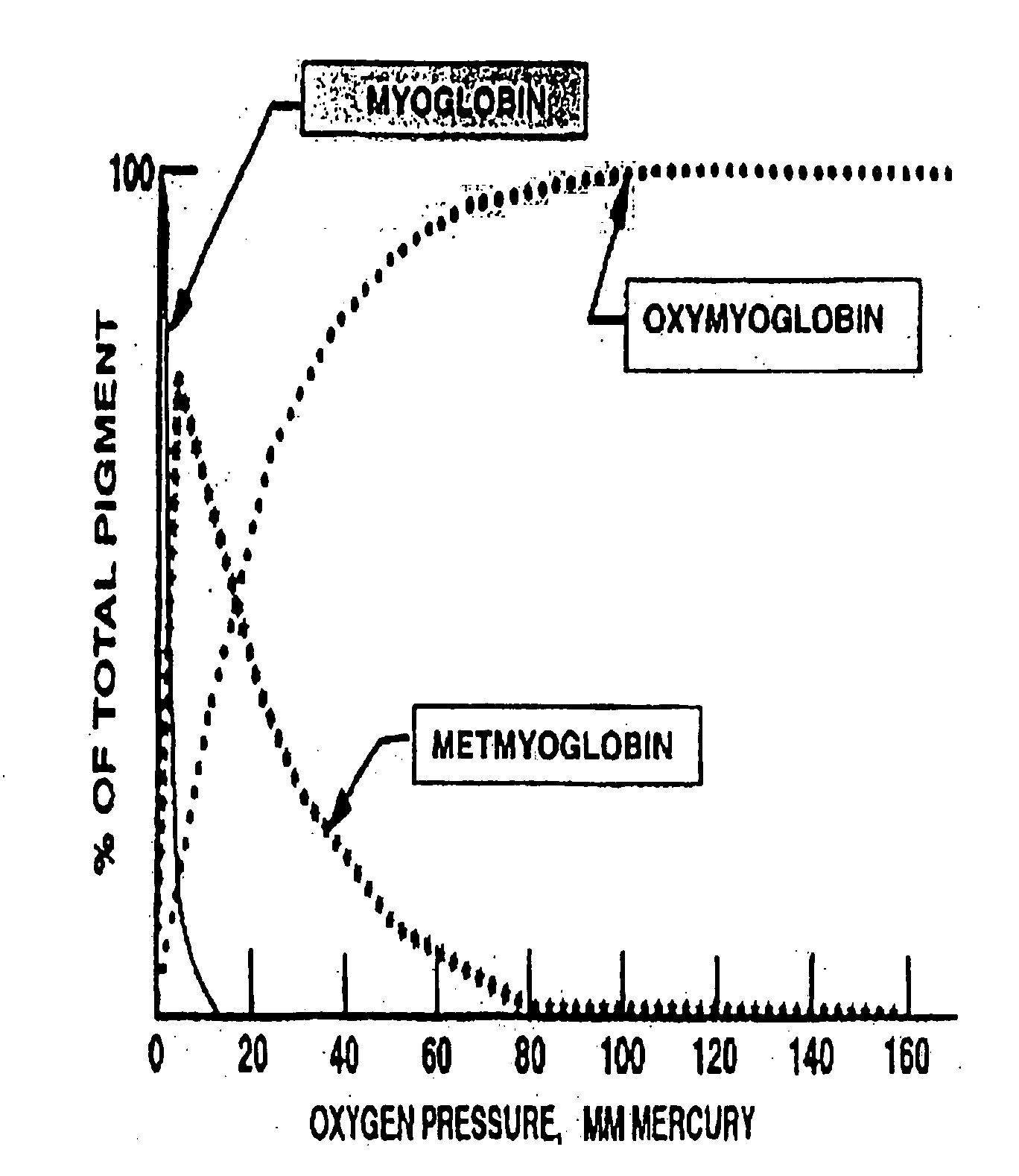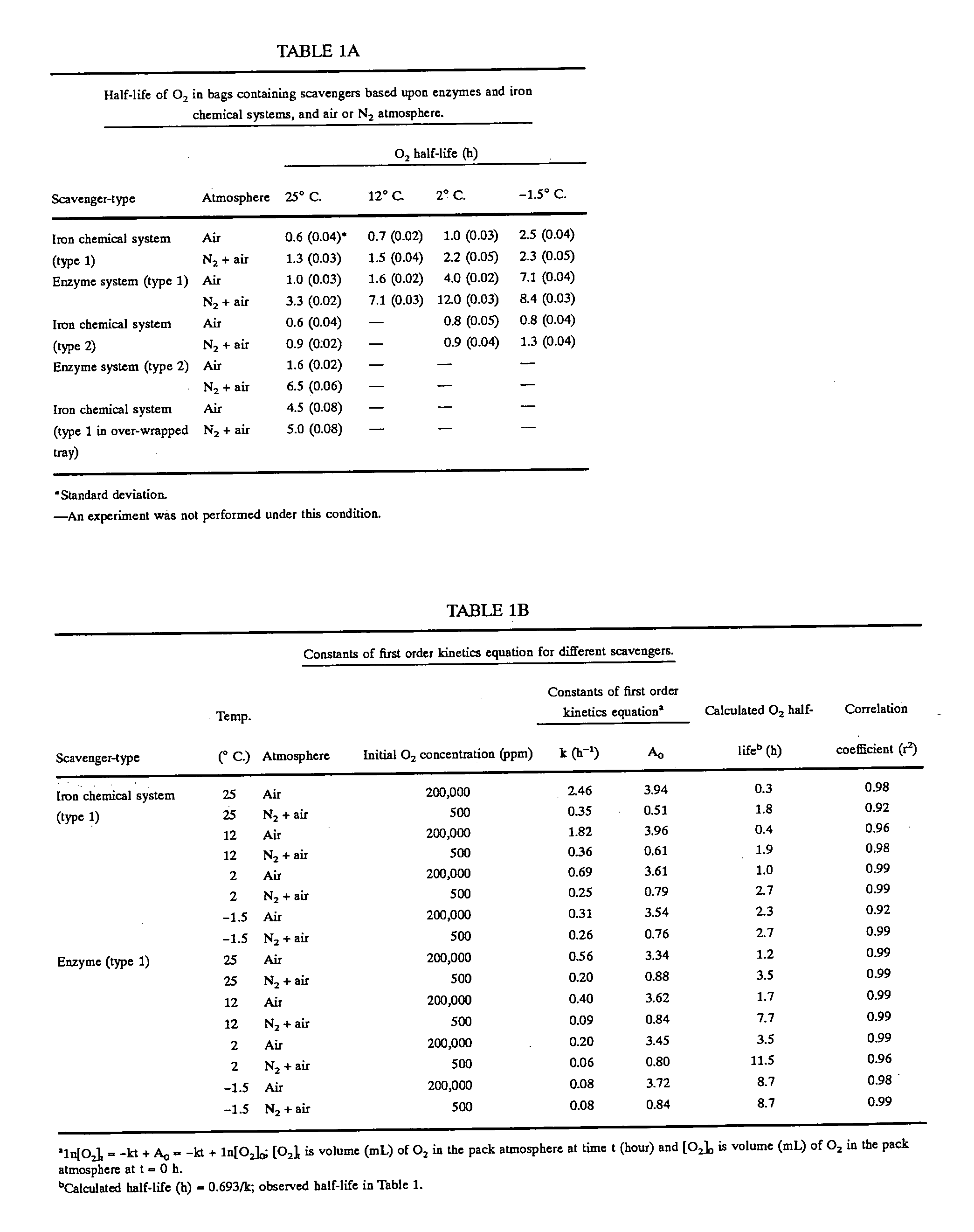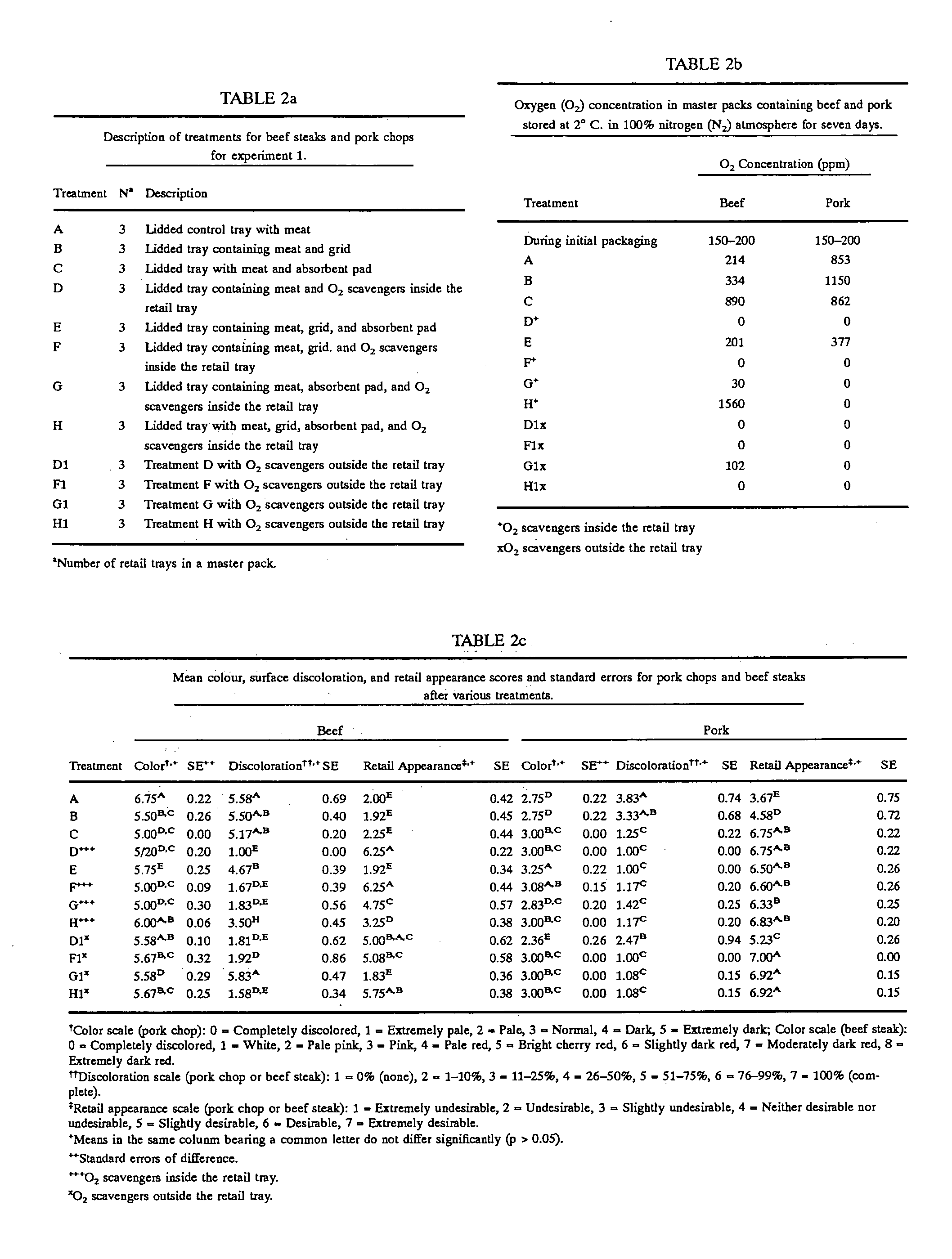Method for extending shelf-life and prevention of discoloration of meat
- Summary
- Abstract
- Description
- Claims
- Application Information
AI Technical Summary
Benefits of technology
Problems solved by technology
Method used
Image
Examples
example 1
Oxygen Absorption Kinetics of Enzymatic and Iron Chemical Systems Based Oxygen Scavengers
[0100] The current uses of O2 scavengers generally involve packs in which the atmosphere contains some substantial fraction of O2, if not air, at the time of pack sealing and the inhibition of chemical reactions or proliferation of microorganisms that proceed relatively slowly. Consequently, commercial O2 scavengers are designed to remove a specified amount of O2 from a relative high O2 atmosphere over periods of a day or more. The rate of O2 absorption has then not been a principal concern in the design of commercial O2 scavengers. However, there are applications such as centralized meat operations where the rate of O2 absorption is of prime importance.
[0101] The O2 absorption rates of O2 scavengers vary with the natures of their reactants and other materials used in their construction. Rates of absorption may also be affected by factors such as temperature and the compositions of the atmosph...
example 2
Testing of Different Master Packaging Options for Centralized Meat Operations
Materials and Methods
[0126] 1. Oxygen (O2) Scavengers
[0127] O2 scavengers, based on iron-chemical systems, were used. These scavengers require moisture for activation and operating in air of N2 atmospheres but not in CO2 atmospheres.
[0128] 2. Master Packaging and Storage of Steaks and Chops
[0129] Experiment 1: Ten fresh beef tenderloins (psoas major, PM) and twenty fresh pork loins (longissimus dorsi, LD) from animals slaughtered 24 hours previously, at local commercial beef- and pork-abattoirs, respectively, were obtained. The meat cuts were vacuum-packaged and stored at 2° C. for 14 to 21 days and then used in the experiments. A total of 39 steaks and 39 pork chops were prepared from the stored samples.
[0130] Each steak or pork chop was placed on a solid polystyrene tray with dimensions of 216×133×25 mm (L×W×H) containing O2 scavengers with O2 absorbing capacity of at least 10 mL per pound of meat ...
experiment 1
[0141] a. Oxygen Concentration
[0142] The O2 concentration in every fifth bag at initial packaging was 150-200 ppm. After being stored for one week at 2° C. the O2 concentration in most bags with O2 scavengers was 0 ppm, except for bags with treatments H, G, and G1 with beef (Table 2b). Bags without O2 scavengers contained small amounts of O2, occasionally up to 1150 ppm.
[0143] b. Visual Properties
[0144] Pork color scores in all treatments ranged from 2.4 to 3.3, and would be considered normal except in treatment D1, where the chops were slightly pale. (Table 2c) Chops in all treatments could be considered to be without discoloration, except in treatments A and B, where the chops were slightly discolored. Chops in all treatments were rated desirable to extremely desirable except in treatments A, B, and D1. Chops in treatment A were rated slightly undesirable and chops in treatments B and D1 were rated slightly desirable. (Table 2c) Beef steaks in all treatments were perceived to b...
PUM
 Login to View More
Login to View More Abstract
Description
Claims
Application Information
 Login to View More
Login to View More - R&D
- Intellectual Property
- Life Sciences
- Materials
- Tech Scout
- Unparalleled Data Quality
- Higher Quality Content
- 60% Fewer Hallucinations
Browse by: Latest US Patents, China's latest patents, Technical Efficacy Thesaurus, Application Domain, Technology Topic, Popular Technical Reports.
© 2025 PatSnap. All rights reserved.Legal|Privacy policy|Modern Slavery Act Transparency Statement|Sitemap|About US| Contact US: help@patsnap.com



